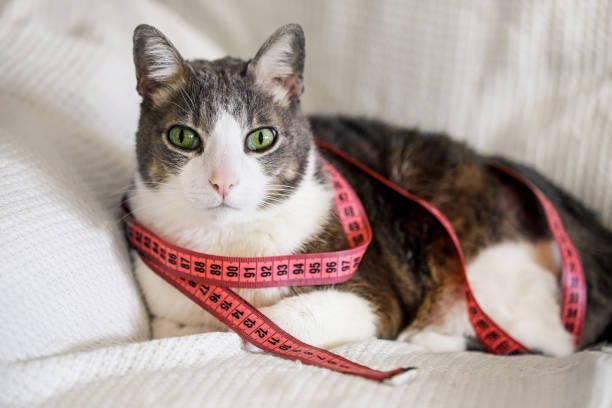Weight is one of the most important indicators of a cat's health. If a cat becomes too heavy or too thin in its adult years, this can signal a malfunction in the body or indicate the need for a change of lifestyle and diet.

What determines the weight of a cat?
Most noticeable is the change in body weight in kittens: in the first year of life, they grow rapidly and actively gain weight.
Thus, by the age of one year, the weight of a medium-sized kitten will be about 9 lbs. Cats of large breeds can reach 14 lbs, and miniature cats - only 6.
By 1.5-2 years, the cat reaches adult size, and a further increase in its body weight becomes undesirable.
With age, metabolic processes in the body of cats slow down. Some chronic diseases may also negatively affect the absorption of nutrients. For this reason, older cats are more likely to suffer from weight disorders: obesity or malnutrition.
Another reason for weight change is neutering. As a result of such interventions, the hormonal background changes and the rate of metabolic processes in the body decreases. Neutered cats require almost a third less energy from food than before surgery. If the caloric content of the diet is not adjusted, the weight of the cat will begin to increase.
Many owners not only do not generally control the amount of food consumed by their pets during the day, but also try to additionally pamper their cat with a treat. This can lead to excess weight even in a healthy and physically active animal.
Physical activity is also an important detail. Domestic cats do not have to hunt, patrol their territory, search for a safe place to rest. The level of their activity depends on the age and temperament, as well as the desire of the owner to play with his pet. To maintain normal body weight, it is important that the cat has the opportunity to move freely during the day.
How can I assess the heaviness of my cat?
Approximate assessment of the fatness of a cat can be done by feeling and examining. Such an assessment will be subjective, but it is easy to be carried out independently, without special equipment and calculations.
A cat with a normal weight has a harmonious physique. Seen from above, the body resembles an hourglass and has a well-defined but not too narrow waist. The ribs are palpable but not visible on examination. The layer of fat on them is not great. When viewed from the side, the abdomen looks taut. When visually assessing the condition of a cat, the characteristics of the breed should also be taken into account.
In an overweight cat, when viewed from above, the waist is hardly noticeable, not defined, the ribs are covered with a layer of fat, and the abdomen has a rounded shape. Fat deposits can also be located on the limbs and in the lumbar region.
In an underweight cat, the ribs, spinous processes of the vertebrae, and pelvic bones are not only easily palpable, but, in short-haired cats, can even be seen upon examination. The waist of such a cat is narrow, the stomach is retracted. Subcutaneous fat deposits are few or absent.
All in all, if you dedicate enough time to the diet and physical activity of your furry friend, you can be sure they are not too heavy or thin.
